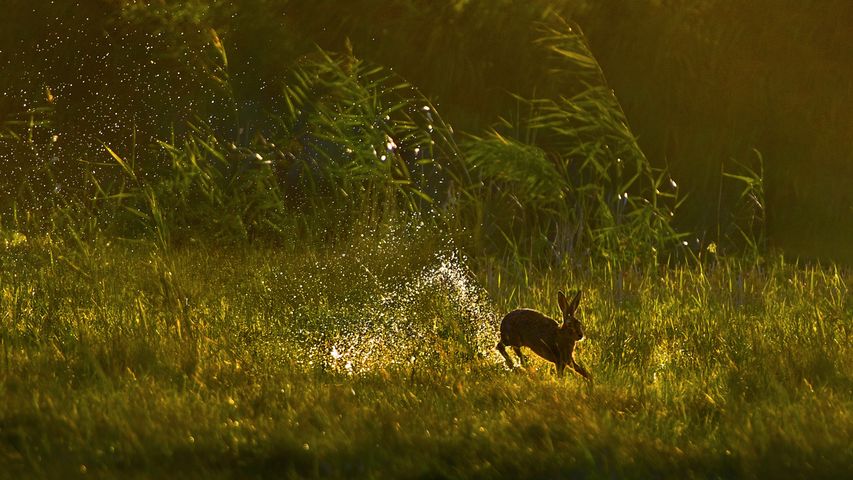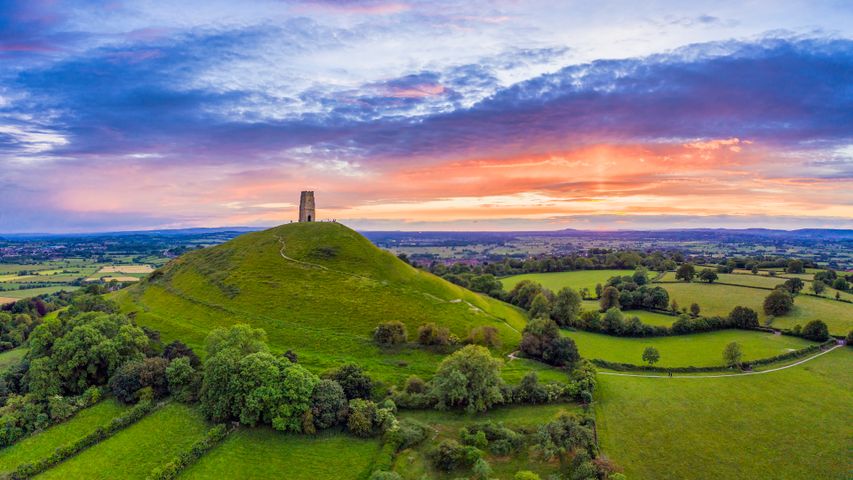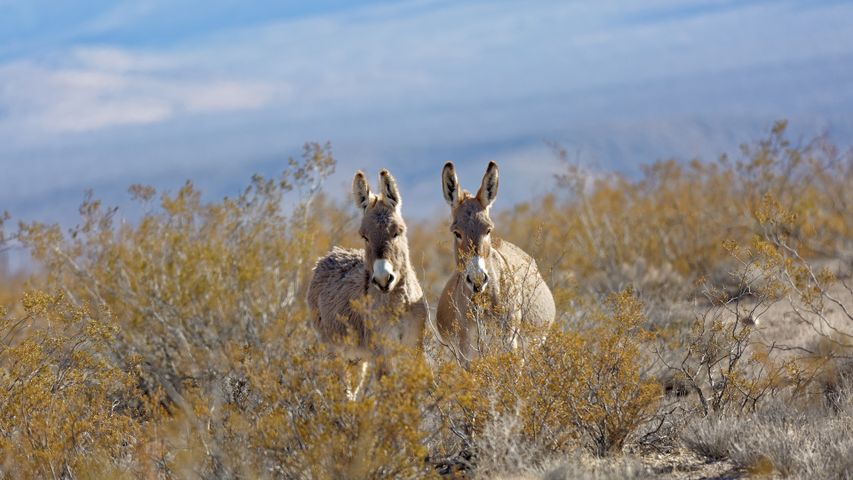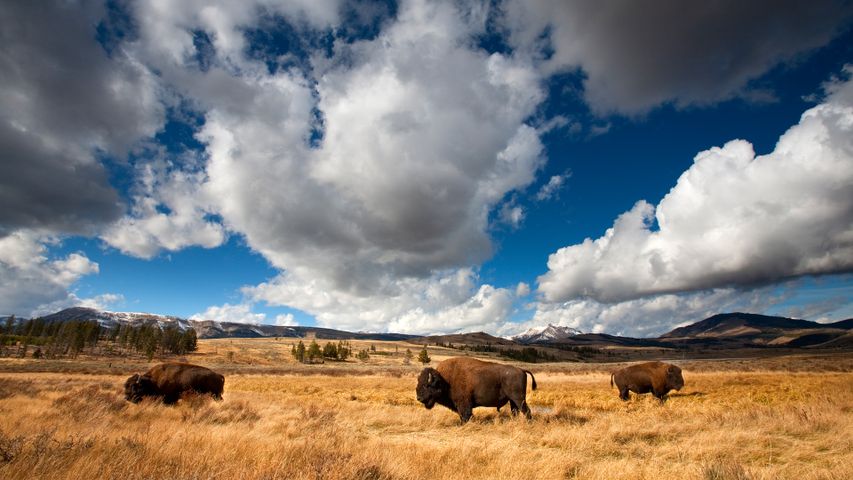A European hare jumps through a wetland in the Netherlands
© Jim Brandenburg/Minden Picture
Getting a jump on spring. Daylight saving time
Just like the European hare, we get a little more hop in our steps this time of year—and a bit more daylight as well. It's the second Sunday of March, when most Americans and Canadians 'spring forward,' setting their clocks ahead one hour in observance of daylight saving time (DST). Then on the first Sunday of November, we'll 'fall back' by turning our clocks back an hour.
The practice of resetting clocks with the seasons became widespread during World War I, first in Germany, as a way to conserve coal used for heating homes. Other European countries followed suit, and the US did, too, in 1918, but that lasted just two years. The US brought it back during World War II, and observing daylight saving time has remained standard practice ever since. Initially it was a mess, with a patchwork of some cities observing it and others not—at one point the Twin Cities of St. Paul and Minneapolis were on different clocks!
Finally, passage of the Uniform Time Act of 1966 got most places in the US marching to the same daily drumbeat. Congress added about a month of DST in 1986 and again in 2007. But not everyone is on board. Arizona and Hawaii do not observe daylight saving time, and dozens of states have introduced legislation to end it permanently.
Related Images
Bing Today Images



 St. Michael's Church Tower on Glastonbury Tor, Glastonbury, Somerset, England
St. Michael's Church Tower on Glastonbury Tor, Glastonbury, Somerset, England
 Masai giraffe mother grooming her calf in the Serengeti, Tanzania
Masai giraffe mother grooming her calf in the Serengeti, Tanzania
 Donkeys in a valley near Rhyolite, Nevada
Donkeys in a valley near Rhyolite, Nevada
 Dunluce Castle, County Antrim, Northern Ireland
Dunluce Castle, County Antrim, Northern Ireland
 Plains zebras at sunrise, Mokala National Park, South Africa
Plains zebras at sunrise, Mokala National Park, South Africa
 American bison in Yellowstone National Park, Wyoming
American bison in Yellowstone National Park, Wyoming
 Wallabies at sunrise, Adelaide River, Northern Territory, Australia
Wallabies at sunrise, Adelaide River, Northern Territory, Australia
 Ancient beech tree, Glenariff Forest Park, County Antrim, Northern Ireland
Ancient beech tree, Glenariff Forest Park, County Antrim, Northern Ireland



